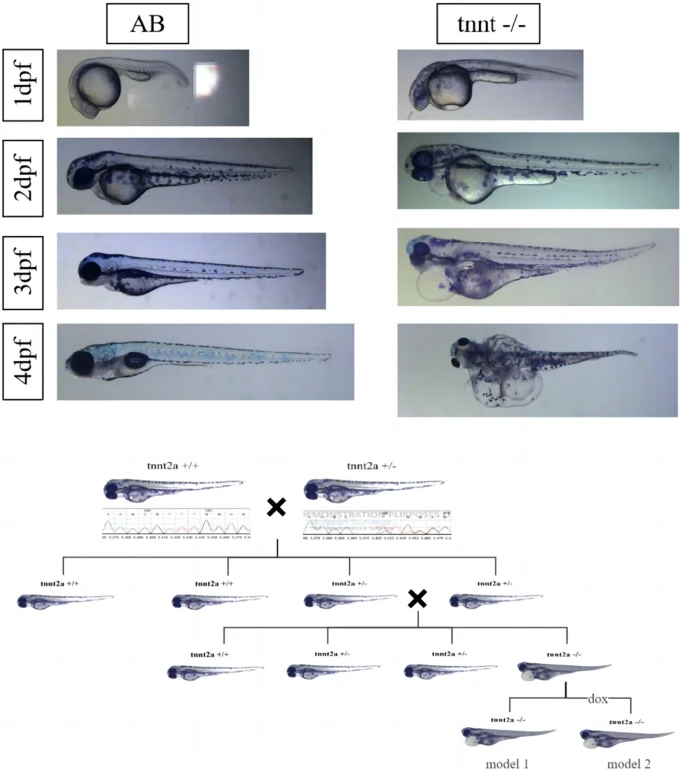Fig. 1 Acquisition and phenotypic analysis of tnnt2a−/− zebrafish. A Model 1 is the tnnt2a−/− homozygous juveniles produced by self-crossing of tnnt2a heterozygotes. Nevertheless, the homozygous mutant model used in this study has only a 25% probability of being obtained through self-crossing, and it exhibits a high mortality rate. To address these limitations, we employed the Tg:Tnnt2a−/− transgenic zebrafish model (referred to as Model 2) in our study. This model features a recovered heartbeat after the addition of DOX, allowing for more reliable and sustainable experimental conditions. B Representative images of lateral view of AB and tnnt2a−/− zebrafish. At 2 dpf, the tnnt2aex10Δ2 ( tnnt2a−/−) exhibits a phenotype reminiscent of dilated cardiomyopathy, characterized by cardiac arrest and enlargement of both the atrium and ventricle. Concurrently, mutant zebrafish display significant pericardial effusion, a hallmark of heart failure, at approximately 3 dpf
Image
Figure Caption
Acknowledgments
This image is the copyrighted work of the attributed author or publisher, and
ZFIN has permission only to display this image to its users.
Additional permissions should be obtained from the applicable author or publisher of the image.
Full text @ BMC Complement Med Ther

